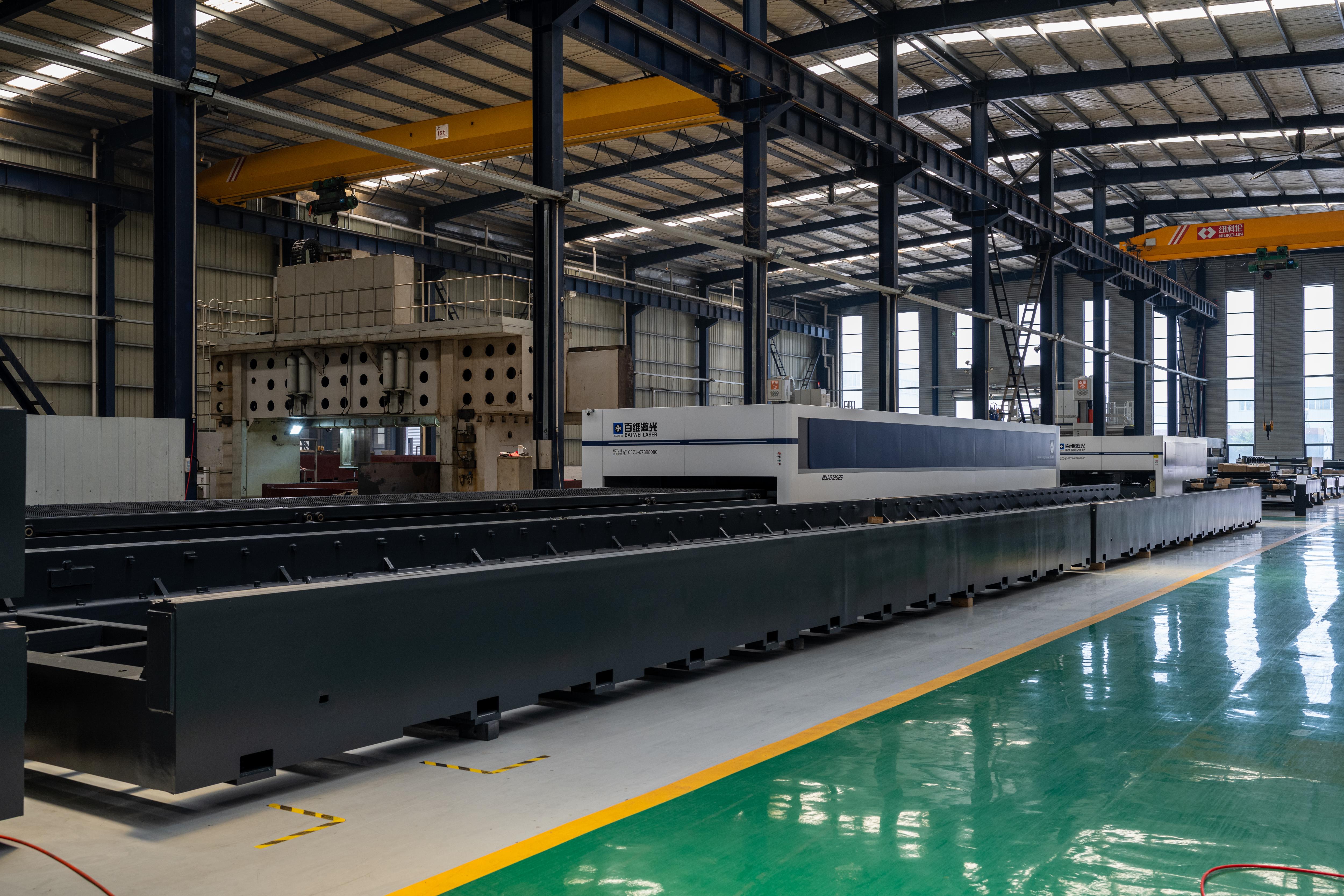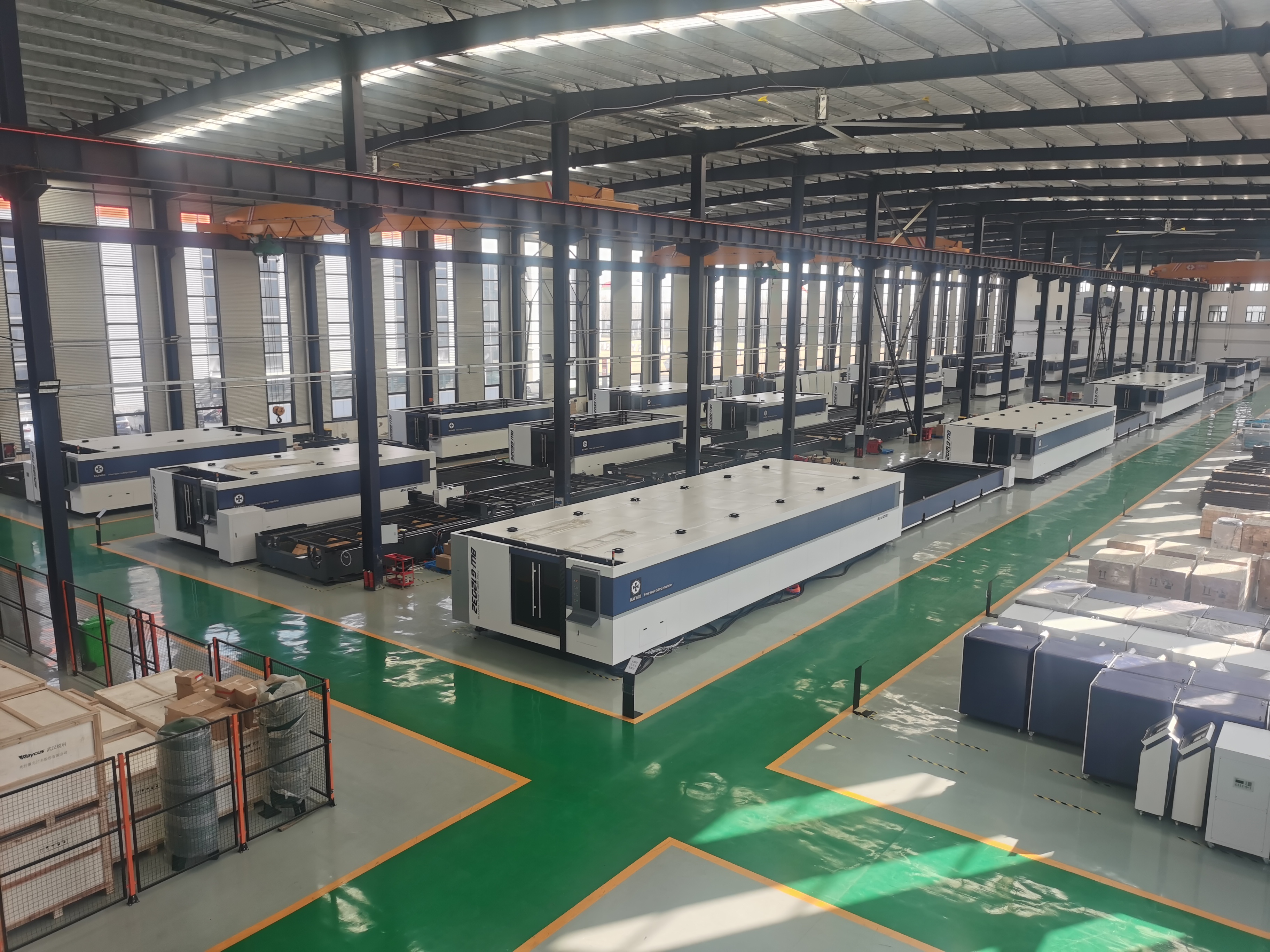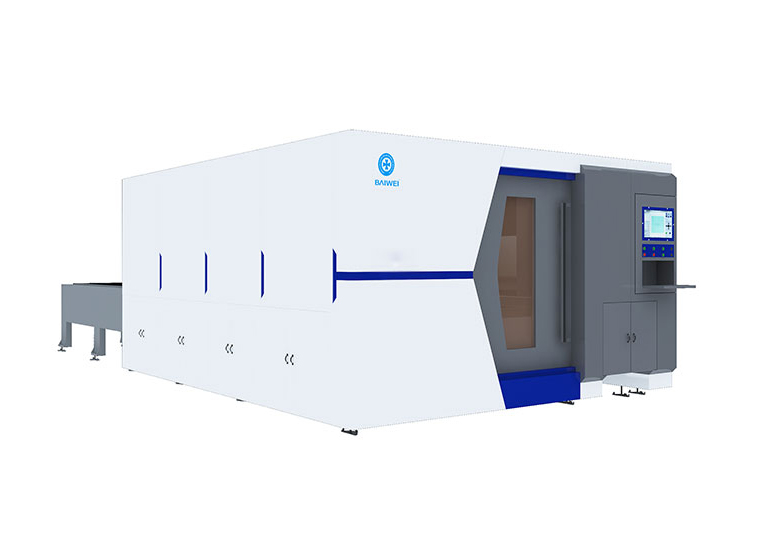
The laser cutting machine is to focus the laser emitted from the laser into a high power density laser beam through the optical path system. The laser beam is irradiated on the surface of the workpiece, making the workpiece reach the melting point or boiling point, while the high-pressure gas coaxial with the beam blows the molten or vaporized metal away. With the movement of the relative position of the beam and the workpiece, the material is finally formed into a slit, so as to achieve the purpose of cutting.
The laser cutting machine has no contact with the workpiece, and will not scratch the surface of the workpiece during work; the laser cutting speed is fast, the incision is smooth and flat, and generally does not require subsequent processing; the cutting heat-affected zone is small, the plate deformation is small, and the slit is narrow (0.1 mm~0.3mm); the incision has no mechanical stress and no shearing burrs; high machining accuracy, good repeatability, and no damage to the surface of the material; CNC programming, can process any plan, and can cut the entire board with a large format without opening mold, economical and time-saving.

Laser cutting machines are widely used in our daily life, so what are the types and advantages of laser cutting machines?
Analysis of the types and advantages of laser cutting machines:
Laser cutting is achieved by applying high power density energy generated by laser focusing. At present, there are three common laser cutting machines on the market: fiber laser cutting machine, CO2 laser cutting machine and YAG laser cutting machine.
1. Fiber laser cutting machine
Fiber laser cutting machine is a laser cutting machine that uses a fiber laser generator as a light source.
Fiber laser is a new type of fiber laser developed in the world. It outputs a laser beam with high energy density and gathers it on the surface of the workpiece, so that the area irradiated by the ultra-fine focus spot on the workpiece is instantly melted and vaporized, and the spot is moved by the numerical control mechanical system. Automatic cutting is achieved by irradiating the position. Compared with bulky gas lasers and solid-state lasers, it has obvious advantages, and has gradually developed into an important candidate in the fields of high-precision laser processing, lidar systems, space technology, and laser medicine.

2. CO2 laser cutting machine
CO2 laser cutting machine can stably cut carbon steel within 20MM, stainless steel within 10MM, and aluminum alloy under 8MM. The wavelength of CO2 laser is 10.6UM, which is relatively easy to be absorbed by non-metals. It can cut non-metallic materials such as wood, acrylic, pp, and plexiglass with high quality, but the photoelectric conversion rate of CO2 laser is only about 10%.
The CO2 laser cutting machine is equipped with a nozzle for spraying oxygen, compressed air or inert gas n2 at the beam outlet to improve the cutting speed and the smoothness of the incision. In order to improve the stability and life of the power supply, the discharge stability of high-power lasers should be solved for CO2 gas lasers. According to international safety regulations, laser hazard levels are divided into 4 levels, and CO2 lasers belong to the least hazard level. However, the cost of using the CO2 laser cutting machine is the most expensive of the three laser cutting machines.
3. YAG laser cutting machine
YAG solid-state laser cutting machine has the characteristics of low price and good stability, but the energy efficiency is generally low.
The wavelength of the laser of the YAG solid-state laser cutting machine is not easily absorbed by non-metals, so it cannot cut non-metallic materials, and the YAG solid-state laser cutting machine needs to solve the problem of improving the stability and life of the power supply, that is, to develop a large-capacity, long-life optical pump Exciting light sources, such as the use of semiconductor optical pumps, can greatly increase the energy efficiency.
 BW-G3015 3kw open type fiber laser cutting machine
BW-G3015 3kw open type fiber laser cutting machine BW-G4020 Open type fiber laser cutting machine
BW-G4020 Open type fiber laser cutting machine BW-G6020 Open type fiber laser cutting machine
BW-G6020 Open type fiber laser cutting machine BW3000 6kw open type fiber laser plate&tube cutting machine
BW3000 6kw open type fiber laser plate&tube cutting machine BW3000 6KW closed type fiber laser plate&tube cutting machine
BW3000 6KW closed type fiber laser plate&tube cutting machine BW-G6025 Closed type fiber laser cutting machine
BW-G6025 Closed type fiber laser cutting machine BW-G12025 Closed type metal sheet laser cutting machine machine
BW-G12025 Closed type metal sheet laser cutting machine machine.jpg) BWQG SERIES Professional Laser Tube Cutting Machine 3kw-20kw
BWQG SERIES Professional Laser Tube Cutting Machine 3kw-20kw
.jpg)



.jpg)





